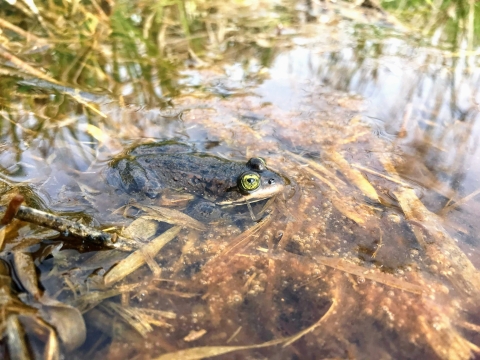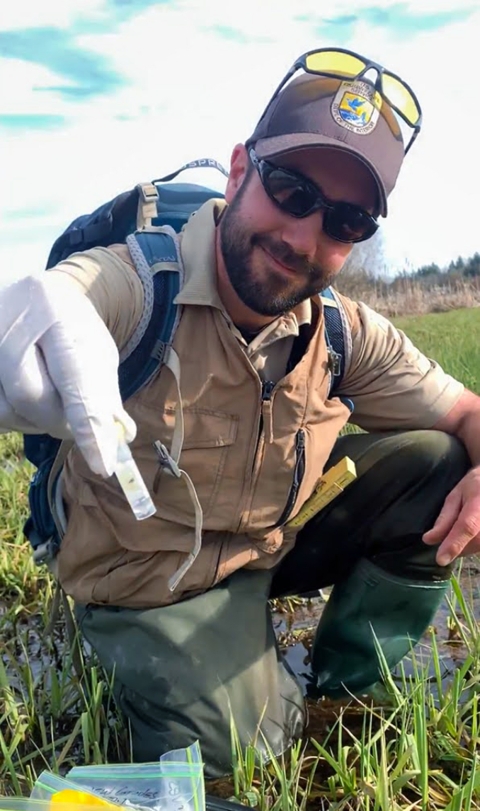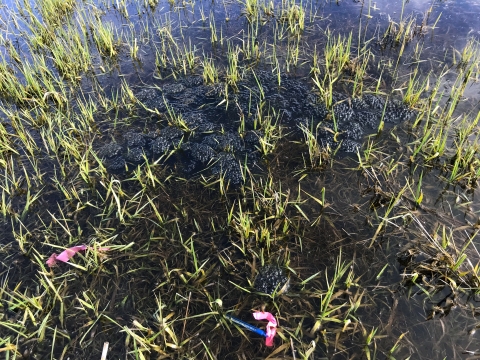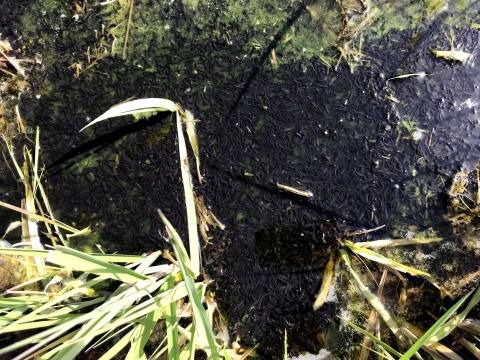Even during Covid restrictions, one group gathering was allowed to continue, and for a good reason.
Our prized Oregon spotted frog (Rana pretiosa) is a communal breeder, and every spring we are fortunate to have them breeding at the Black River Unit.
I have been monitoring this federally-listed frog (endangered in Washington State) for the last few years and I want to share why “Frog Season” is my favorite time of the year.
Each winter/spring, I slip on my waders (and often a rain jacket too) and head to the wetlands to visit this frog’s historic breeding pools to look and listen for “spotties.”
I am mainly sloshing through shallow water, usually less than a foot deep.
Sometimes, I must get into chest-deep water to access some of their communal breeding sites.
I keep an ear out for the male advertisement call, which sounds like a distant woodpecker knocking on a tree.
My polarized sunglasses help me look for frogs and frog eggs, so I don’t step on them.
The frogs have high site fidelity, so they return yearly to the same breeding area (aka oviposition site).
These sites have shallow water, short vegetation, and often clear views of the sky, allowing the water to warm up more quickly, which is helpful for breeding in cooler months.
The gatherings start with males calling near the breeding site. When the females are ready, they will move toward the calling males.
A male will move into an amplexus position (go ahead and google it). The female will then carry the male on her back to the oviposition site, where egg deposition and external fertilization occurs.
I usually show up after all that excitement to find their egg masses, which are fist-sized congealed balls of fertilized frog eggs and contain about 600 embryos.
But the party doesn’t stop there!
These frogs are explosive communal breeders. Within the next few weeks, more frogs will come to the same breeding spot and add their eggs to the pile.
Sometimes these clusters have just a few egg masses, and other times they can add up to over 100 egg masses.
This communal egg deposition benefits the embryos, as internal temperatures are greater than the surrounding water and the clusters retain heat for about 1.5 hours after sunset.
Higher temperature means faster larval development, which is essential when you are a juvenile frog egg laid in shallow waters with a dryer season in the forecast.
If you didn’t think that was cool, wait 2-4 weeks.
The tadpoles hatch and become free-swimming. Instead of taking off for permanent water, they hang out on top of the egg cluster for almost another week.
An egg cluster of 100 masses, each producing about 600 tadpoles, can house a party of 60,000 wiggling tadpoles! (I imagine them dancing.) However, the party must end, and the tadpoles will move to deeper water to complete their metamorphosis.
Hopefully, in a few years (after reaching sexual maturity), they will be back for the annual group gathering and aid in the recovery of their species.








